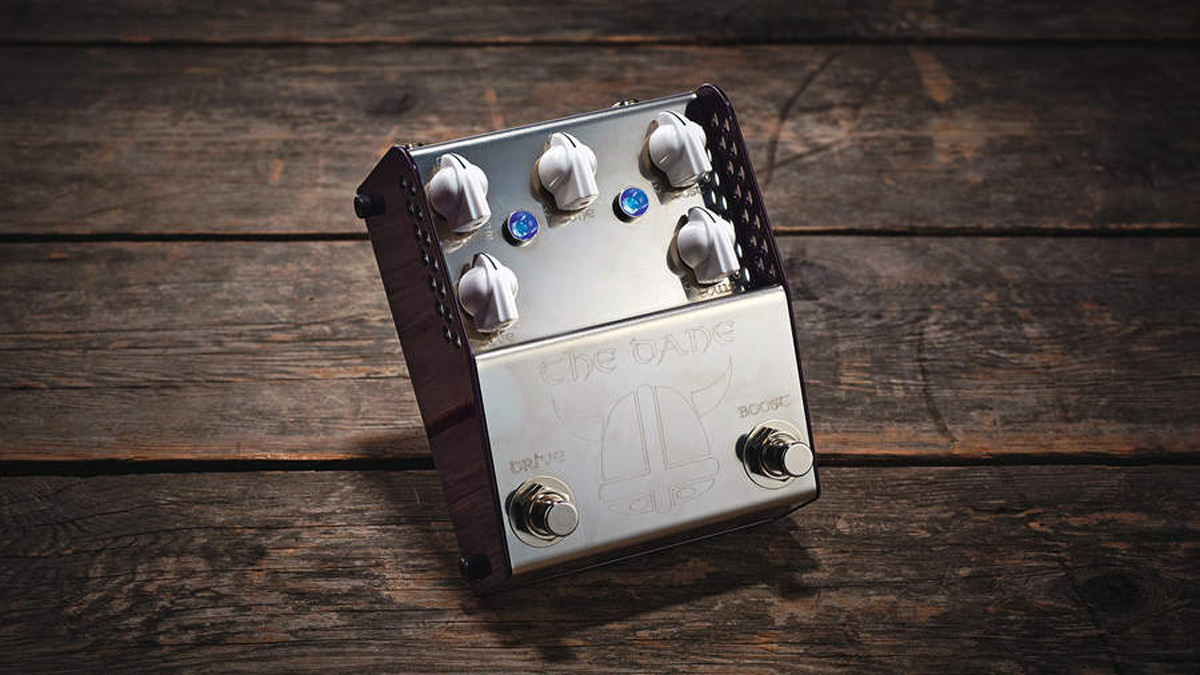MusicRadar Verdict
A deceptively useful, well-executed pedal.
Pros
- +
Rich, stacked-drive sounds that remain responsive even when pushed hard.
Cons
- -
Can’t swap order of boost and drive, as with the Keeley D&M Drive.
MusicRadar's got your back
Pedals featuring a duo of drive voices are becoming a bit of a thing it seems.
After all, it makes perfect sense. Most players cruise along with a bit of crunchy drive when playing rhythm, but want to go louder and more searing for the solo. Having the ability to toggle between the two states in one pedal is thus a very handy thing.
Now Thorpy FX has joined the dual-drive fray with The Dane, so named because it was designed in collaboration with Peter Honoré, aka ‘Danish Pete’ - well known for his Anderton’s YouTube slots, but also has a very solid career as a pro guitarist with stars such as Tom Jones.
The pedal is no phoned-in vanity project, thankfully, as Honoré’s road-honed needs were detailed and specific. He required a mid-gain overdrive that was very responsive to picking dynamics, but which could be made to saturate sweetly for solos with the addition of a boost. In The Dane, the boost comes before the overdrive in the pedal’s internal signal chain.
As Adrian admits, he would normally do the opposite and stack a higher-gain overdrive into a lower-gain boost - as this arrangement tends to make the voice of the overdrive louder when the boost is kicked in without changing its basic character. But running clean boost into overdrive, as on The Dane, yields a fattening, saturating quality instead, that is less about a pure volume increase and more about slathering on another layer of rich compression, too.
The Dane features simple Tone, Volume and Drive controls for the overdrive side – and then, on the boost side of the pedal, two controls governing Boost (level) and Lows to fatten up single coils.
In use, the overdrive side on its own is toothy, purposeful and, like all Thorpy drives we’ve played, has great clarity without being clinical. We’d have no compunction in using it on its own... except the real magic happens when you engage the boost as well. What you get then is a really fat, sustaining lead tone that somehow keeps its edge definition and lively responsiveness to picking dynamics.
Want all the hottest music and gear news, reviews, deals, features and more, direct to your inbox? Sign up here.
This is a deceptively useful, well-executed pedal that’ll grant you get a rorty stacked tone as your go-to lead sound, with the option to hop off the gas for quieter bits, falling back on either funky, high- headroom cleans or tasteful crunch. Skål, Pete!
Jamie Dickson is Editor-in-Chief of Guitarist magazine, Britain's best-selling and longest-running monthly for guitar players. He started his career at the Daily Telegraph in London, where his first assignment was interviewing blue-eyed soul legend Robert Palmer, going on to become a full-time author on music, writing for benchmark references such as 1001 Albums You Must Hear Before You Die and Dorling Kindersley's How To Play Guitar Step By Step. He joined Guitarist in 2011 and since then it has been his privilege to interview everyone from B.B. King to St. Vincent for Guitarist's readers, while sharing insights into scores of historic guitars, from Rory Gallagher's '61 Strat to the first Martin D-28 ever made.

